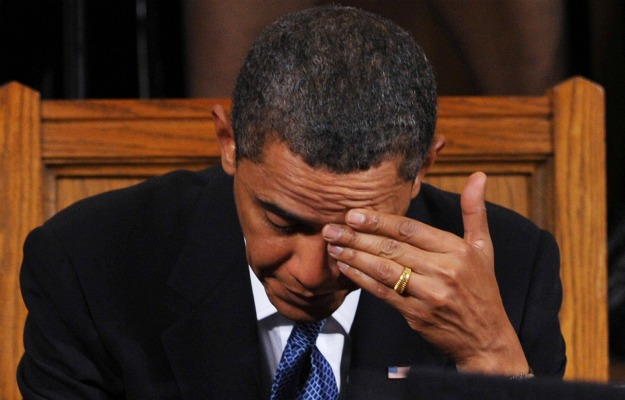

Polling data suggest Democrats may be headed for a worse Election Day than in both 1994 and 2010.
A new USA Today/Pew Research poll conducted from April 23 – 27 is bad news all around for the Democratic Party, with Republicans leading 47 – 43 percent on the generic ballot. That may not seem so terrible, but the latest polling data suggest the 2014 midterm elections may end up in a worse defeat for Democrats than either 1994 or 2010, two cycles resulting in historic Republican gains.
The current 4-point lead for the Republican Party compares with a 2-point deficit they faced in the Pew poll back in 1994 around this time, and the tie at 44 percent Pew found in March, 2010. Similarly, a CNN/Opinion Research poll found a 1-point lead for the Republicans on the generic ballot, compared with a 4-point Democratic lead in a CNN poll back in April, 2010. Sure, polls change. However, as I have been arguing since last year, which you can read on our 2014 Senate Map and Generic Ballot analysis, the fundamentals are moving strongly against the Democrats.
When asked which policies “would do more to strengthen the economy over the next few years,” 43 percent say the economic policies of Republican leaders in Congress, while just 39 percent say the economic policies of Barack Obama’s administration. Democrats are constantly pointing to the poor ratings of congressional Republicans, but much of those negatives have come from the right, and policy preferences matter when people think their economic condition needs improvement.
Voters in the USA Today/Pew poll disapprove of ObamaCare by a 55 – 41 percent margin, but intensity is working against the president and the Democrats. Within the numbers, 43 strongly disapprove of the president’s health care law, while just 26 strongly approve. Further, just 16 percent say their vote for Congress will be a vote for Obama, but 26 percent say their vote will be against Obama. CNN asked the question slightly different, but found the same trend.
In September, 2010, 19 percent said their vote would be meant to send a message that they support Obama, while 26 percent said their vote was meant to send a message they oppose him. Now, the margin is a nearly identical 20 – 25 percent in opposition to the president’s policies.
Voter intensity, as we have consistently seen in prior polling, is dominated by the right this cycle.
Despite early polling showing Clinton leading GOP hopefuls, American voters appear ready to move in a different direction than the direction President Obama has taken them and the country, which is very much in line with time-tested laws of political science. In modern American politics, only twice did a two-term president’s party succeed at winning what was essentially a third term in the White House (Truman after Roosevelt and H.W. Bush after Reagan).
When asked if voters would “like to see a president who offers policies and programs similar to those of the Obama administration, OR would you like to see a president who offers different policies and programs,” it’s bad news for Hillary or whomever may be the Democratic nominee.
The number of voters who chose the “policies and programs similar to the Obama administration” is ten points lower than when Clinton was in his second term — 30 percent. Meanwhile, a whopping 65 percent of Americans say they are ready to go in a different direction, which is almost the same as the 70 percent who said that in 2006 during the Bush administration. Now, whether the Republican Party and their nominee can convince voters they can lead them in that direction is a whole other story, altogether. But, still, the warning signs are clear.
Democrats appear to be in big, big trouble. With President Obama’s job approval stubbornly low, and even lower still than it was in the month of May before Election Day 2010, the fundamentals are beginning to shape the political landscape. As I have hammered over and over again, Democrats need a substantial lead on the generic ballot, and there is a strong relationship between presidential approval rating and congressional election outcomes. In May of 2010, Pew Research measured an above-water 47 – 42 percent approval for Obama, but found an upside-down 44 – 50 percent margin this week. CNN measured the president’s approval at 51 – 46 percent in May, 2010, but now he’s upside-down 43 – 55 percent.
The generic ballot, which according to the PPD average Democrats are currently trailing in by a .6-point margin, indicates the president’s party will get thumped in November — again.







